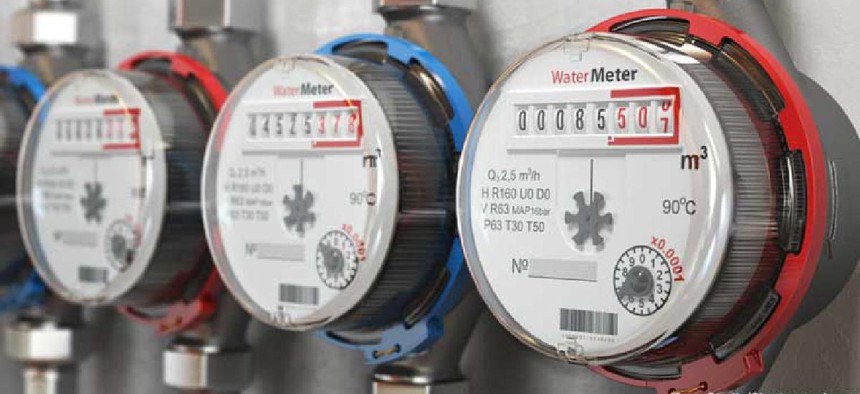AI-based monitoring spots water meter issues

Gwinnett County, Ga., could recoup about $50,000 per month from 19 commercial water meters that have been incorrectly measuring flow, based on discrepancies discovered by edge technology.
Gwinnett County, Ga., could recoup about $50,000 per month from 19 commercial water meters that have been incorrectly measuring flow, based on discrepancies discovered by edge technology.
A recent pilot test of Olea Edge Analytics’ CityEdge intelligent computing platform on 25 commercial meters in the county found that 76% indicated pipes were either letting water flow too slowly or at too high a rate.
“The staff has been drilling down into what those are,” said Melissa Meeker, CEO of the Water Tower, the county’s water innovation center. “We’re working with Olea to analyze the data as well as going out and actually doing inspections on those meters. More than half, I’d say, are little nuances that the traditional inspections would never catch.”
That’s because newly launched CityEdge uses artificial intelligence and machine learning to monitor water meters. Specifically, its Meter Health Analytics solution has a camera that watches the dial on the meter, a magnetic sensors that track the rotation of the turbine in the meter and an acoustic sensor that listens to water flow.
“The combination of all three of those things gives us the ability to really look at things that really have never been discovered before,” said Dave Mackie, CEO at Olea Edge Analytics.
Those sensors send data into an AI model and the results are compared to billing records. CityEdge uses Google’s Coral technology for processing data at the edge. Reference and event data plus alerts are sent to the cloud through cellular communications. The company is working on enabling real-time alerting, Mackie said.
The platform also uses blockchain for accounting, validating and accountability. When data is generated on a meter sensor, it is encrypted in the blockchain ledger and distributed across every device in the network.
What’s more, the platform creates a digital twin of every meter on the network for finer analysis of any problems. “The water meters are very, very crude as far as any way to analyze them, and so a digital twin is … a way to … see how it’s behaving,” Mackie said.
To protect the data, CityEdge uses IPsec tunnels end-to-end and a trusted platform module that encrypts data at rest on the device.
CityEdge assets are strapped onto the meters to avoid disrupting them or interrupting water service.
Typical water meter testing involves a flow test to ensure that a meter is correctly calibrated. Another technique called crossover determines how well large and small pipes service a building for high and low flows and how well they handle the handoff between each other.
“Somewhere between 10% and 40% of water passing through commercial meters is undercounted,” Mackie said. “A complex commercial water meter can weigh up to a ton. They require a crane to get it in and out of the ground. They’re not like the water meter you might have in your house or condo,” he said. “There’s a lot of mechanical parts in there and they just fail…. We’ve created a set of sensors that we place around the water meters, and we are able to determine how much the water meter is inaccurate by. Once we get that amount, we can provide a repair schedule for the utility to go out and make repairs, and then they can start recovering that revenue.”
For the pilot test, the Water Tower had Olea place its technology in large commercial areas, including a mall and apartment complexes, where they suspected there could be issues.
Water Tower workers are making repairs now on identified problems, and Meeker said they’ll wait to compare the data on flow before and after those changes before ending the pilot and possibly launching a procurement process. The county has more than 250 commercial meters that are 4 inches or larger that could eventually get sensors, she said.
The return on investment can be significant, Mackie said. One city’s $25,000 investment led to an annualized return of more than $600,000, and Atlanta recovered $1 million in a few months.
“We’re enabling cities to bill their commercial customers for the water they’re actually using -- no more, no less than what they’re actually consuming -- and that provides a tremendous amount of revenue for the cities that they can use for other purposes,” he said.
Olea’s algorithms also work on meters for propane tanks and electricity, for example, but the financial impact is lower, Mackie said.





